-
 Bitcoin
Bitcoin $120400
1.77% -
 Ethereum
Ethereum $3615
7.90% -
 XRP
XRP $3.580
17.84% -
 Tether USDt
Tether USDt $1.001
0.06% -
 BNB
BNB $729.4
1.25% -
 Solana
Solana $179.9
5.04% -
 USDC
USDC $0.0000
0.01% -
 Dogecoin
Dogecoin $0.2311
8.22% -
 TRON
TRON $0.3226
4.04% -
 Cardano
Cardano $0.8490
12.85% -
 Hyperliquid
Hyperliquid $46.45
0.72% -
 Stellar
Stellar $0.4913
8.54% -
 Sui
Sui $4.027
2.00% -
 Chainlink
Chainlink $18.51
11.67% -
 Hedera
Hedera $0.2818
21.51% -
 Avalanche
Avalanche $24.03
7.40% -
 Bitcoin Cash
Bitcoin Cash $508.5
2.90% -
 Shiba Inu
Shiba Inu $0.00001496
3.24% -
 UNUS SED LEO
UNUS SED LEO $8.961
1.83% -
 Toncoin
Toncoin $3.264
3.13% -
 Litecoin
Litecoin $104.6
8.15% -
 Polkadot
Polkadot $4.389
6.11% -
 Uniswap
Uniswap $9.924
10.63% -
 Monero
Monero $337.9
0.49% -
 Pepe
Pepe $0.00001376
2.79% -
 Bitget Token
Bitget Token $4.830
2.46% -
 Ethena USDe
Ethena USDe $1.001
0.05% -
 Dai
Dai $1.000
0.02% -
 Aave
Aave $325.2
1.66% -
 Bittensor
Bittensor $423.7
-0.85%
How to transfer Bitcoin between exchanges?
Transferring Bitcoin between exchanges requires careful preparation, including verifying account details, checking limits and fees, and ensuring the correct receiving address.
Apr 21, 2025 at 12:50 pm
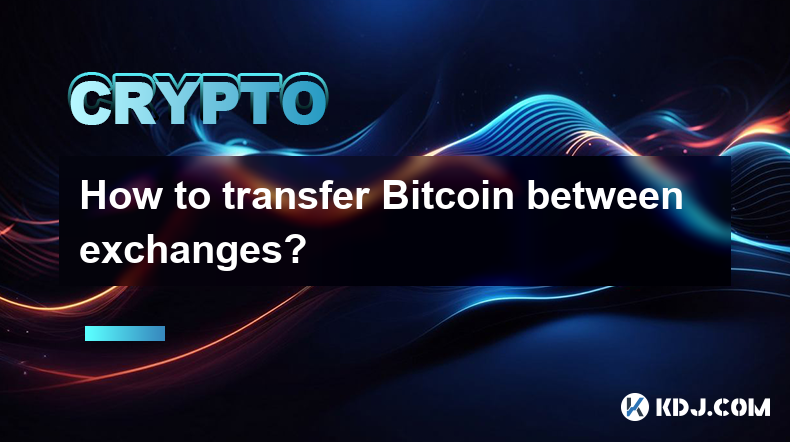
Transferring Bitcoin between exchanges is a common task for cryptocurrency enthusiasts looking to diversify their portfolios or take advantage of better trading opportunities on different platforms. The process, while straightforward, requires careful attention to detail to ensure the safety and success of your transactions. In this guide, we'll walk through the steps needed to transfer Bitcoin between exchanges, highlighting key considerations and best practices.
Preparing for the Transfer
Before initiating a Bitcoin transfer, it's crucial to prepare adequately to minimize risks and ensure a smooth transaction. Start by verifying your account details on both the sending and receiving exchanges. This includes ensuring that your account on the receiving exchange is fully verified and that you have access to all necessary security measures, such as two-factor authentication (2FA).
Next, check the withdrawal and deposit limits on both exchanges. Some platforms have daily or weekly limits that could affect the amount of Bitcoin you can transfer at one time. Additionally, review the fees associated with the transfer. Exchanges typically charge a fee for both withdrawals and deposits, which can vary significantly between platforms.
Finally, ensure that you have the correct Bitcoin address for the receiving exchange. A common mistake that can lead to the permanent loss of funds is sending Bitcoin to an incorrect or outdated address. Most exchanges provide a unique deposit address for each user, so make sure to use the most recent one provided by the receiving exchange.
Initiating the Transfer from the Sending Exchange
Once you've completed your preparations, you can proceed to initiate the transfer from the sending exchange. Here's how to do it:
- Log in to your account on the sending exchange and navigate to the withdrawal section.
- Select Bitcoin as the cryptocurrency you wish to withdraw. Ensure that you are selecting the correct network (e.g., Bitcoin, not Bitcoin Cash).
- Enter the withdrawal amount in BTC. Double-check this amount to ensure it falls within the exchange's limits and your intended transfer size.
- Paste the receiving address into the withdrawal form. This is the Bitcoin address provided by the receiving exchange. Verify that the address is correct before proceeding.
- Review the transaction details, including the withdrawal fee and the total amount of Bitcoin that will be sent.
- Confirm the withdrawal using any required security measures, such as 2FA or email verification.
After confirming the withdrawal, the sending exchange will process the transaction and broadcast it to the Bitcoin network. This process can take anywhere from a few minutes to several hours, depending on the exchange's processing times and the current state of the Bitcoin network.
Monitoring the Transfer
Once the transfer is initiated, it's important to monitor its progress to ensure that it is completed successfully. You can do this by:
- Checking the transaction status on the sending exchange. Most platforms provide a transaction history or withdrawal status page where you can track the progress of your withdrawal.
- Using a blockchain explorer to view the transaction on the Bitcoin blockchain. You can find the transaction ID (TXID) on the sending exchange and enter it into a blockchain explorer to see its status and confirmations.
- Monitoring the receiving address on the receiving exchange. Once the transaction is confirmed on the blockchain, the receiving exchange should credit the Bitcoin to your account.
It's important to be patient during this process, as Bitcoin transactions can take time to be fully confirmed. Typically, a transaction is considered secure after receiving at least six confirmations on the blockchain.
Receiving the Bitcoin on the Receiving Exchange
Once the transaction has been confirmed on the blockchain, the receiving exchange should credit the Bitcoin to your account. Here's what to do next:
- Log in to your account on the receiving exchange and navigate to the deposit section.
- Verify that the Bitcoin has been credited to your account. This may take some time, as exchanges have their own internal processing times for deposits.
- Check the balance to ensure that the correct amount of Bitcoin has been received, accounting for any fees charged by either exchange.
If you encounter any issues with the deposit, such as a delay or discrepancy in the amount received, contact the customer support of the receiving exchange for assistance. Provide them with the transaction details, including the TXID, to help resolve the issue.
Security Considerations
When transferring Bitcoin between exchanges, security should be a top priority. Here are some key considerations to keep in mind:
- Use strong passwords and enable 2FA on both the sending and receiving exchanges. This adds an extra layer of security to your accounts and helps prevent unauthorized access.
- Be cautious of phishing attempts. Always access the exchanges through their official websites and be wary of emails or messages requesting personal information or login credentials.
- Keep your computer and software up to date to protect against malware and other security threats that could compromise your transactions.
- Consider using a hardware wallet for storing your Bitcoin between transfers. Hardware wallets offer an additional layer of security by keeping your private keys offline.
By following these steps and security measures, you can safely transfer Bitcoin between exchanges and manage your cryptocurrency portfolio effectively.
Frequently Asked Questions
Q: Can I transfer Bitcoin between exchanges without fees?
A: While most exchanges charge fees for withdrawals and deposits, some platforms offer promotions or lower fees for certain users. It's important to check the fee structures of both the sending and receiving exchanges to understand the total cost of the transfer.
Q: How long does it take for a Bitcoin transfer to be completed?
A: The duration of a Bitcoin transfer can vary depending on several factors, including the processing times of the sending and receiving exchanges, the current congestion on the Bitcoin network, and the number of confirmations required. Generally, a transfer can take anywhere from a few minutes to several hours.
Q: What should I do if my Bitcoin transfer is delayed or stuck?
A: If your Bitcoin transfer is delayed or appears to be stuck, first check the transaction status on the sending exchange and use a blockchain explorer to see if the transaction has been broadcast to the network. If it has not been broadcast, contact the sending exchange's customer support. If the transaction is on the blockchain but has not been confirmed, you may need to wait for the network to process it. If the receiving exchange has not credited the Bitcoin after the transaction has been confirmed, reach out to their customer support for assistance.
Q: Is it safe to transfer large amounts of Bitcoin between exchanges?
A: Transferring large amounts of Bitcoin between exchanges can be safe if you follow best practices for security. Use strong passwords, enable 2FA, and consider using a hardware wallet for storing your Bitcoin between transfers. Additionally, always double-check the receiving address and transaction details before confirming the transfer.
Disclaimer:info@kdj.com
The information provided is not trading advice. kdj.com does not assume any responsibility for any investments made based on the information provided in this article. Cryptocurrencies are highly volatile and it is highly recommended that you invest with caution after thorough research!
If you believe that the content used on this website infringes your copyright, please contact us immediately (info@kdj.com) and we will delete it promptly.
- Bitcoin, MSTR & Saylor's Strategy: A Winning Trifecta?
- 2025-07-18 08:30:13
- Bitcoin Mortgages Down Under: A New Wave in Australian Homeownership?
- 2025-07-18 08:50:12
- Cryptocurrencies, Bitcoin, and the Next Wave: What's Coming?
- 2025-07-18 08:50:12
- Maharashtra Government Nurses Launch Indefinite Strike: A Healthcare Crisis?
- 2025-07-18 04:30:13
- Hilbert Group, Syntetika, and Tokenization: Bridging DeFi and Institutional Finance
- 2025-07-18 05:30:12
- Crypto Regulation in the US House: Decoding the CLARITY Act and What It Means for You
- 2025-07-18 04:30:13
Related knowledge
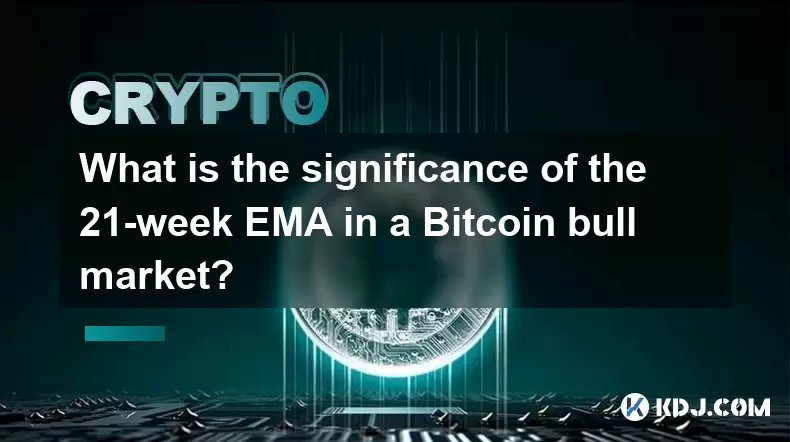
What is the significance of the 21-week EMA in a Bitcoin bull market?
Jul 10,2025 at 06:56pm
Understanding the 21-Week EMA in Cryptocurrency AnalysisThe 21-week Exponential Moving Average (EMA) is a technical indicator widely used by traders a...
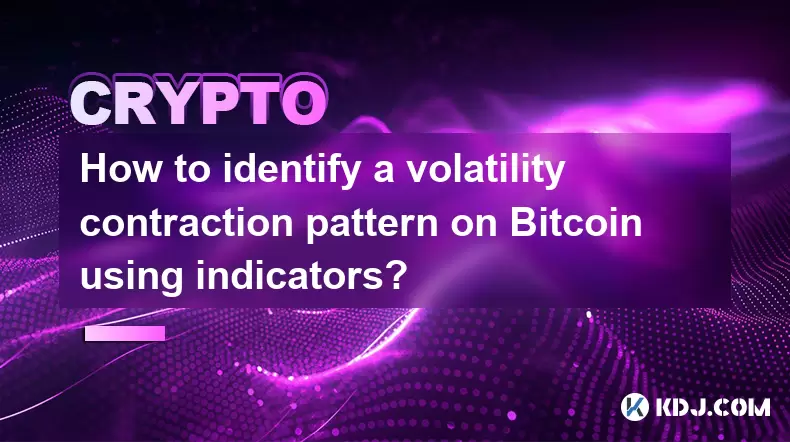
How to identify a volatility contraction pattern on Bitcoin using indicators?
Jul 07,2025 at 07:28am
What is a Volatility Contraction Pattern in Bitcoin Trading?A volatility contraction pattern refers to a phase where the price movement of an asset, s...
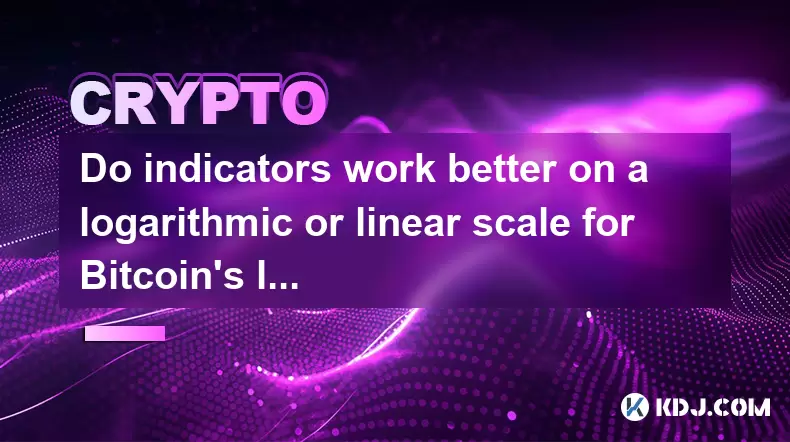
Do indicators work better on a logarithmic or linear scale for Bitcoin's long-term chart?
Jul 08,2025 at 01:42pm
Understanding Chart Scales in Cryptocurrency TradingIn cryptocurrency trading, particularly for analyzing Bitcoin's long-term trends, chart scales pla...

What is the Woodies CCI indicator and can it be used for Bitcoin?
Jul 04,2025 at 05:14pm
Understanding the Woodies CCI IndicatorThe Woodies CCI indicator is a variation of the traditional Commodity Channel Index (CCI), which was originally...
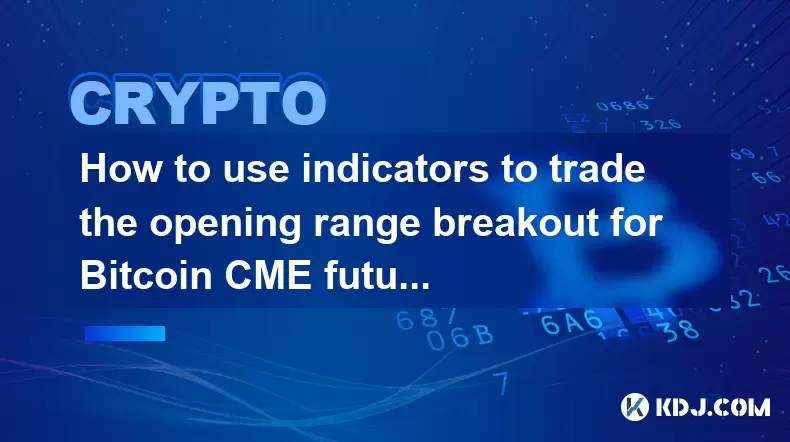
How to use indicators to trade the opening range breakout for Bitcoin CME futures?
Jul 05,2025 at 07:35pm
What Is the Opening Range Breakout Strategy?The opening range breakout (ORB) strategy is a popular trading technique used in both traditional markets ...
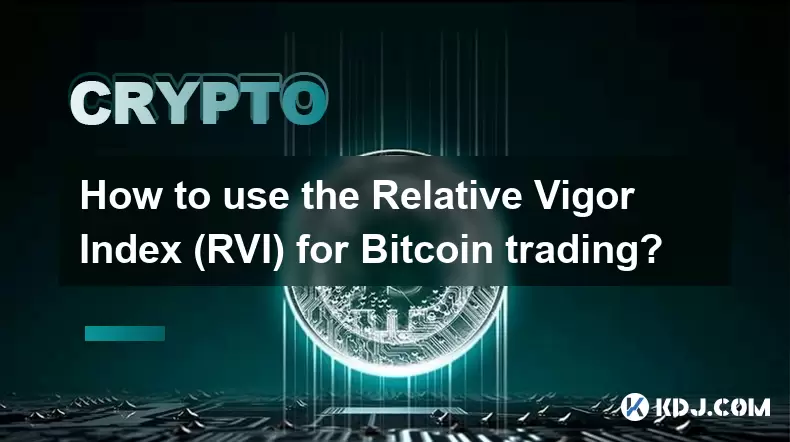
How to use the Relative Vigor Index (RVI) for Bitcoin trading?
Jul 07,2025 at 02:00pm
Understanding the Relative Vigor Index (RVI)The Relative Vigor Index (RVI) is a technical analysis tool used to assess the strength of price movements...

What is the significance of the 21-week EMA in a Bitcoin bull market?
Jul 10,2025 at 06:56pm
Understanding the 21-Week EMA in Cryptocurrency AnalysisThe 21-week Exponential Moving Average (EMA) is a technical indicator widely used by traders a...

How to identify a volatility contraction pattern on Bitcoin using indicators?
Jul 07,2025 at 07:28am
What is a Volatility Contraction Pattern in Bitcoin Trading?A volatility contraction pattern refers to a phase where the price movement of an asset, s...

Do indicators work better on a logarithmic or linear scale for Bitcoin's long-term chart?
Jul 08,2025 at 01:42pm
Understanding Chart Scales in Cryptocurrency TradingIn cryptocurrency trading, particularly for analyzing Bitcoin's long-term trends, chart scales pla...

What is the Woodies CCI indicator and can it be used for Bitcoin?
Jul 04,2025 at 05:14pm
Understanding the Woodies CCI IndicatorThe Woodies CCI indicator is a variation of the traditional Commodity Channel Index (CCI), which was originally...

How to use indicators to trade the opening range breakout for Bitcoin CME futures?
Jul 05,2025 at 07:35pm
What Is the Opening Range Breakout Strategy?The opening range breakout (ORB) strategy is a popular trading technique used in both traditional markets ...

How to use the Relative Vigor Index (RVI) for Bitcoin trading?
Jul 07,2025 at 02:00pm
Understanding the Relative Vigor Index (RVI)The Relative Vigor Index (RVI) is a technical analysis tool used to assess the strength of price movements...
See all articles

























































































